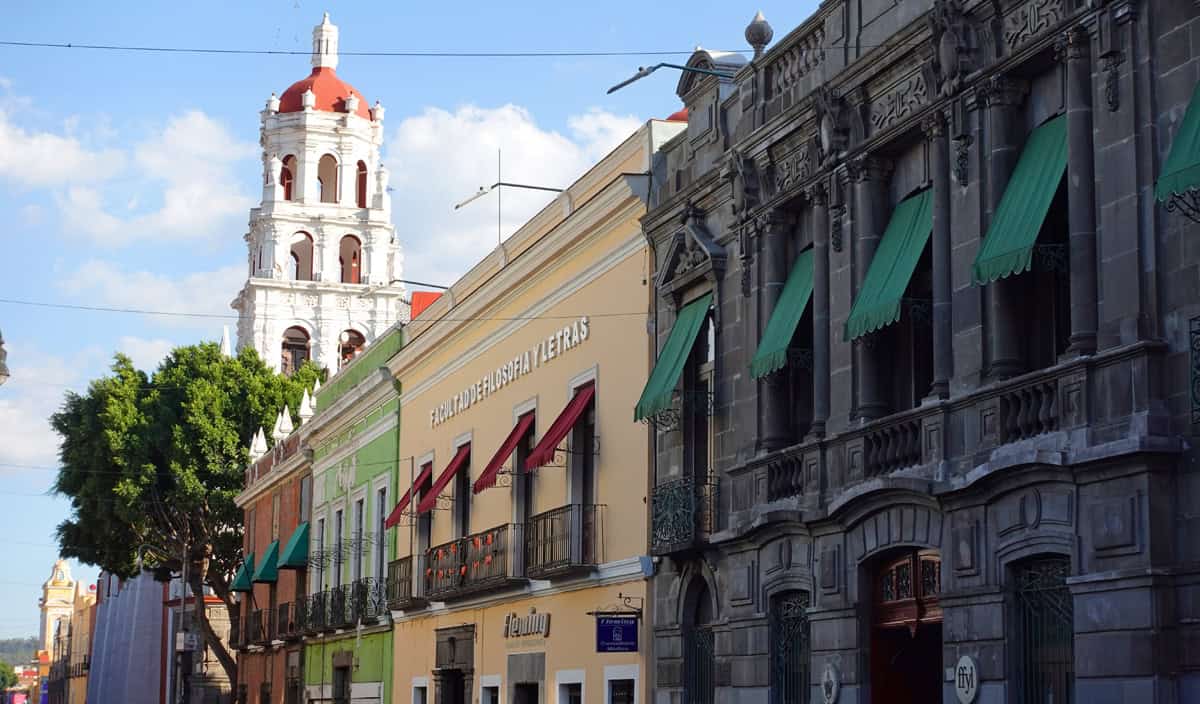
Puebla – Mexico’s most beautiful city?
I’ve been to Puebla now 3 times. Is it Mexico’s most beautiful city? You could debate that, a few cities come to mind as competition for that title (Guanajuato, Zacatecas, San Miguel de Allende, some say Merida…)
Puebla, the 4th largest Mexican city with a population of 1.5 million, is located 75 miles from Mexico City. The Historical Center (named a UNESCO World Heritage Site in 1987) is packed with colorful colonial buildings, churches, monuments, and a beautiful zocalo (main square). One of the architectural aspects that sets Puebla apart from other cities in Mexico are the beautiful Talavera tiles decorating the facades of many of its historic buildings.
This city is probably the most underrated and overlooked in Mexico. Below I cover some of the city’s highlights, showing off Puebla’s beauty in photos.
Note: On this latest trip to Puebla we stayed at the Palacio Julio Hotel. Very much recommended. I have some other recommendations at the bottom of this post.
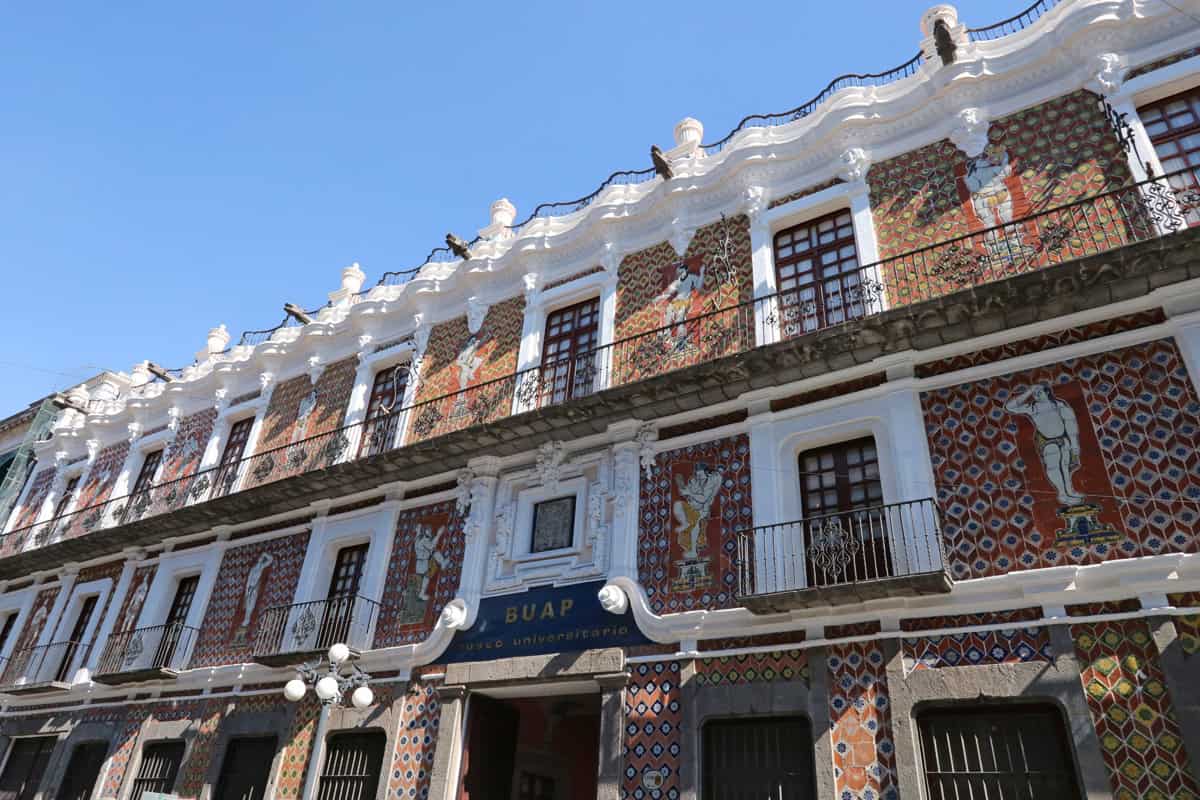
A bit of background:
-The historic center of Puebla was declared a UNESCO World Heritage Site in December of 1987. With 2,619 monuments, the city has the largest number of monuments in the Americas.
-Puebla is sometimes called ‘City of Street Lights’ due to the numerous decorative street lamps crafted by the French. The French legacy can also be seen in the city’s elaborate wrought iron balconies and the fine crystal chandeliers adorning historic buildings.
-Puebla is one of the richest cities in Mexico and is considered to have the highest quality of life in the country due to its wealth and safety (2nd only to Tlaxcala) .
-Puebla has the largest Volkswagen factory in the world outside of Germany.
-Puebla is home to the first public library in the Americas, the Biblioteca Palafoxiana, which is the only remaining library from the Spanish Colonial period.
-Puebla’s culinary tradition, known as Cocina Poblana, is popular throughout Mexico. A distinctive feature of the region’s cooking is mole, a rich, spicy sauce containing chocolate, cinnamon and nuts as well as different types of hot peppers. Mole is the most renowned of Puebla’s dishes.
-The Cinco de Mayo holiday has its roots in Puebla. In 1862, France invaded Mexico, planning to make it part of the French Empire. Outnumbered Mexican forces met the French at Puebla and managed to defeat the French army (many of who were weakened by diarrhea). This is the reason for the Cinco de Mayo celebrations in the US and Mexico every year and also the reason that streets all over Mexico are named Cinco de Mayo. What few know is that the French came back the following year, won, and occupied Puebla until 1867.
–Talavera ceramics are unique to Puebla and many of the buildings in the Centro Historico have these beautifully painted tiles adorning their walls.
Highlights
1. The Zocalo (main plaza)
The main square has existed since the founding of the city in 1531 but was used mostly as a marketplace where bullfights, theatre and hangings occurred. It’s an attractive square with the Puebla sign, a fountain, benches, large trees (that provide shade) and flowers. Surrounding the square are some of the city’s most impressive buildings, among them the colossal cathedral and city hall. But every corner has impressive buildings, including long portals with commercial stores and restaurants.
The Zocalo is a great place to sit and just soak in Puebla. It’s completely safe: I’ve often come here on my visits, sitting on a bench with a coffee and watching locals going about their business.
.
2. Puebla Cathedral
The huge cathedral, which takes up the entire block on the south side of the zócalo, has the highest towers of any cathedral in Mexico (69 m) as well as an incredible, intricate interior filled with frescos and side chapels. Construction of the cathedral began in 1550 but most of what you see was finished in the 1640s.
Like all Cathedrals in Mexico, entry is free.
3. Amparo Museum
The Amparo museum is an art/history museum with one of the largest pre-Hispanic art collections of any museum in Mexico. It also showcases temporary exhibits by current artists, most with a Mexican or Latin flavor (they had a exhibit by a Brazilian photographer while we were there).
But there is one reason I always come back – the rooftop café has some of the best views of Puebla. Come here, have a coffee, and enjoy the views (and it’s free to go up. Just tell them you want to go to the café).
4. The Colorful streets of the Centro Historico
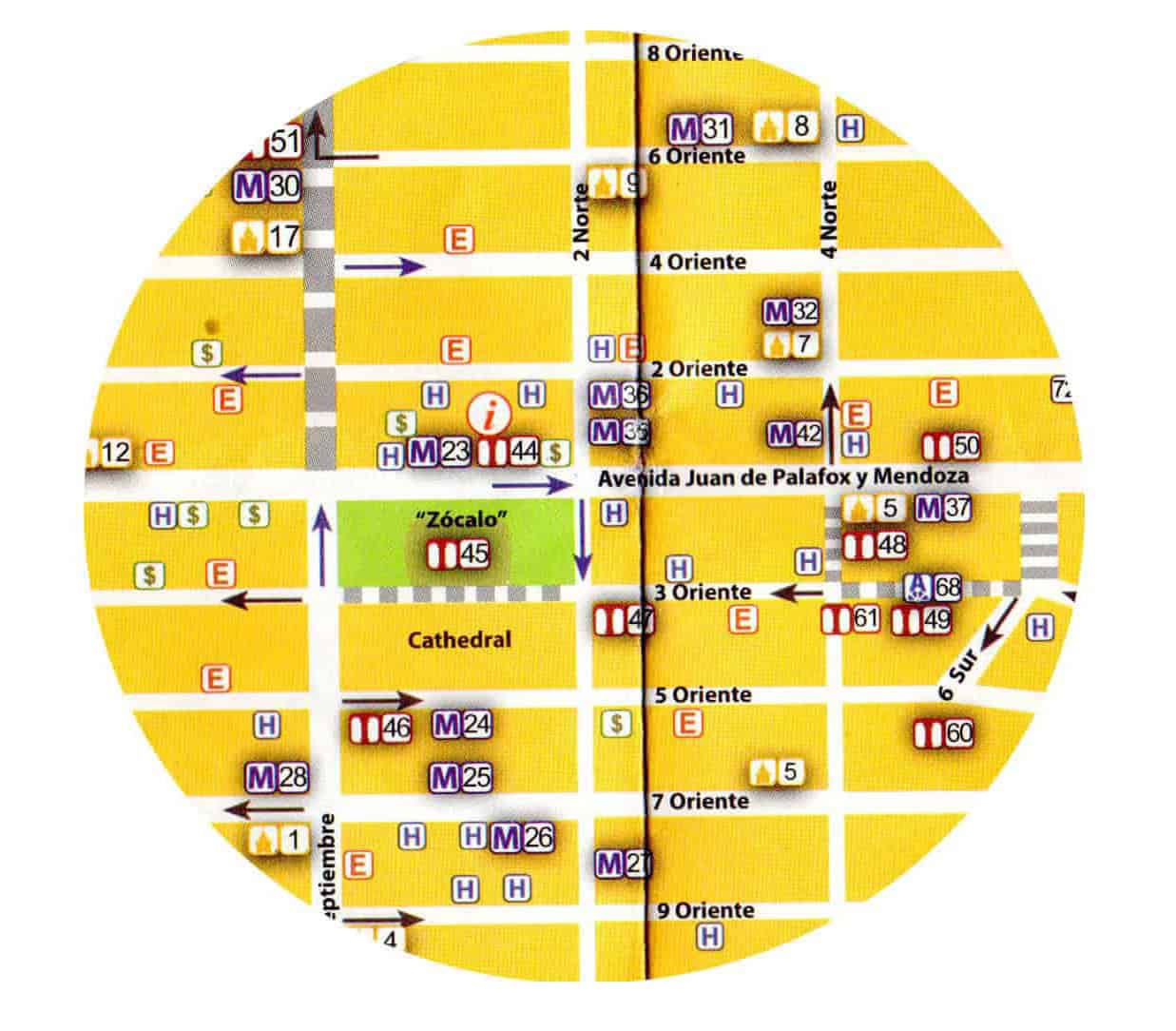
5. Incredible Churches
Puebla has too many churches to count. The Centro Historico alone has 79 churches within its boundaries.
Santo Domingo church (below) is one of Puebla’s most popular churches, famous for its stunning Rosario Chapel (which looks gold plated – it’s not. It’s actually decorated using gilded plaster and onyx stone).
But you’ll see a church on almost every corner…

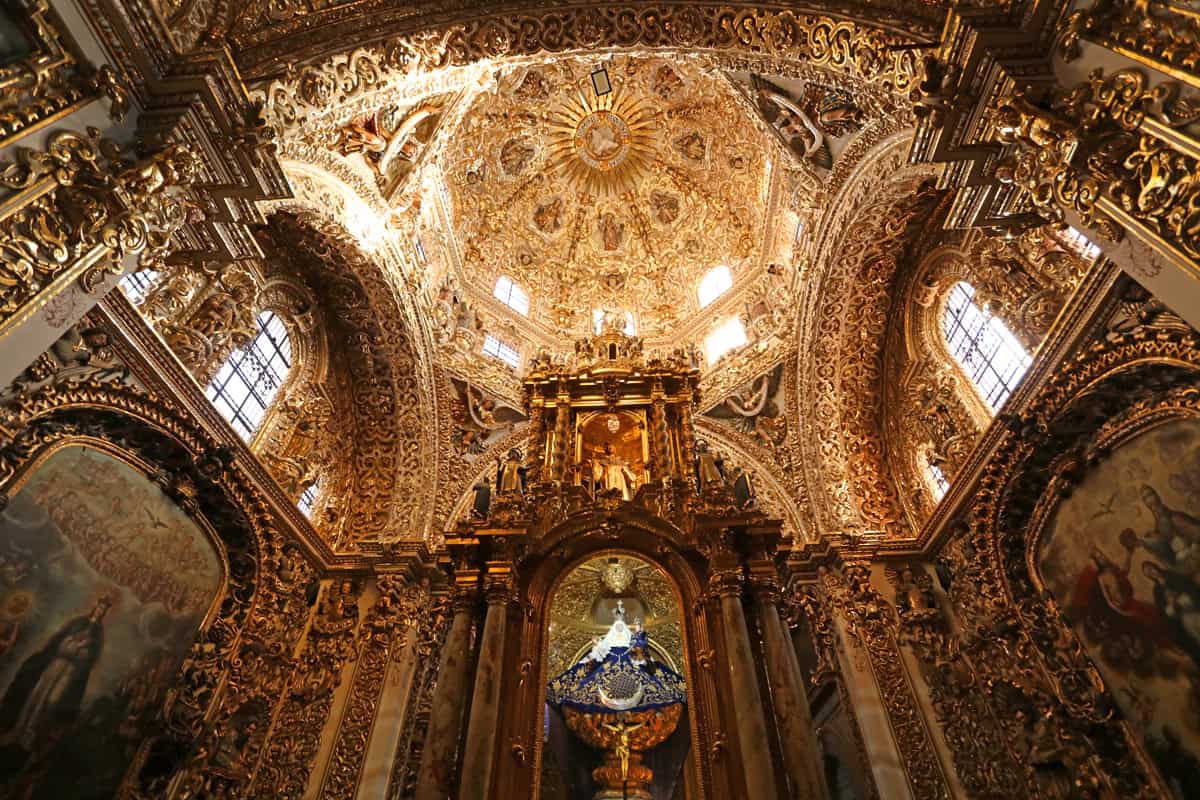
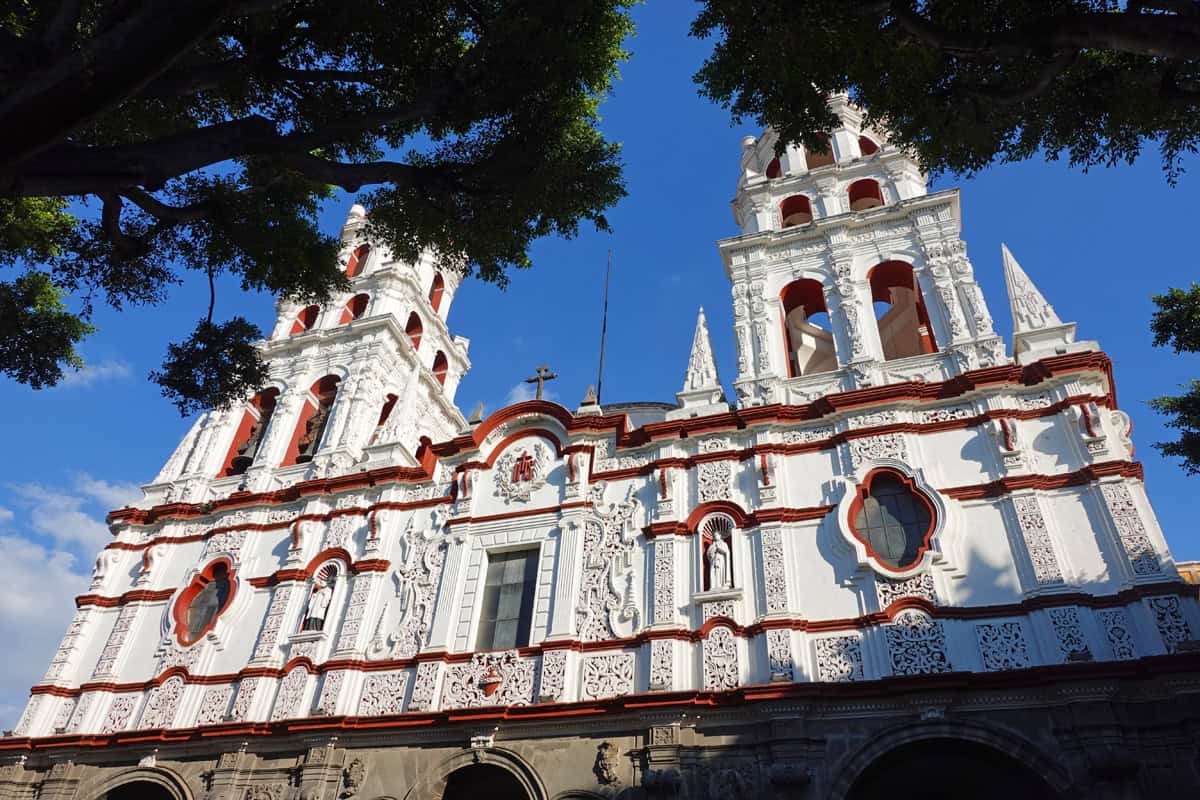
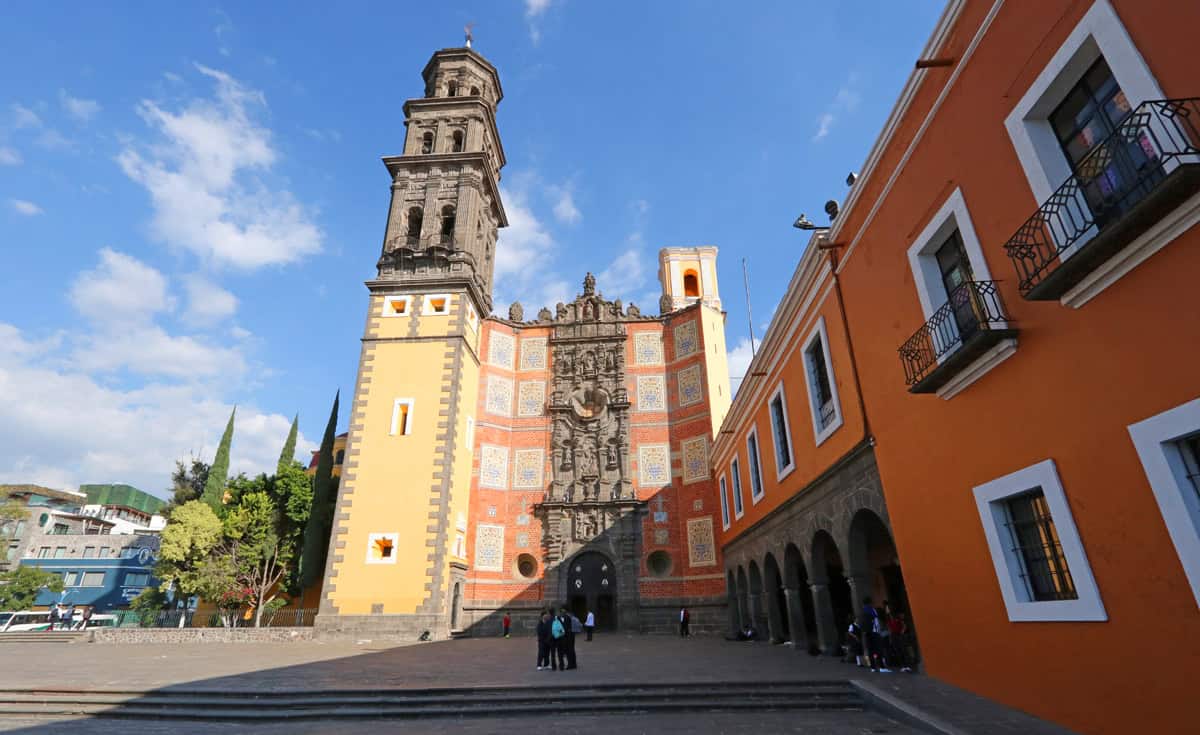
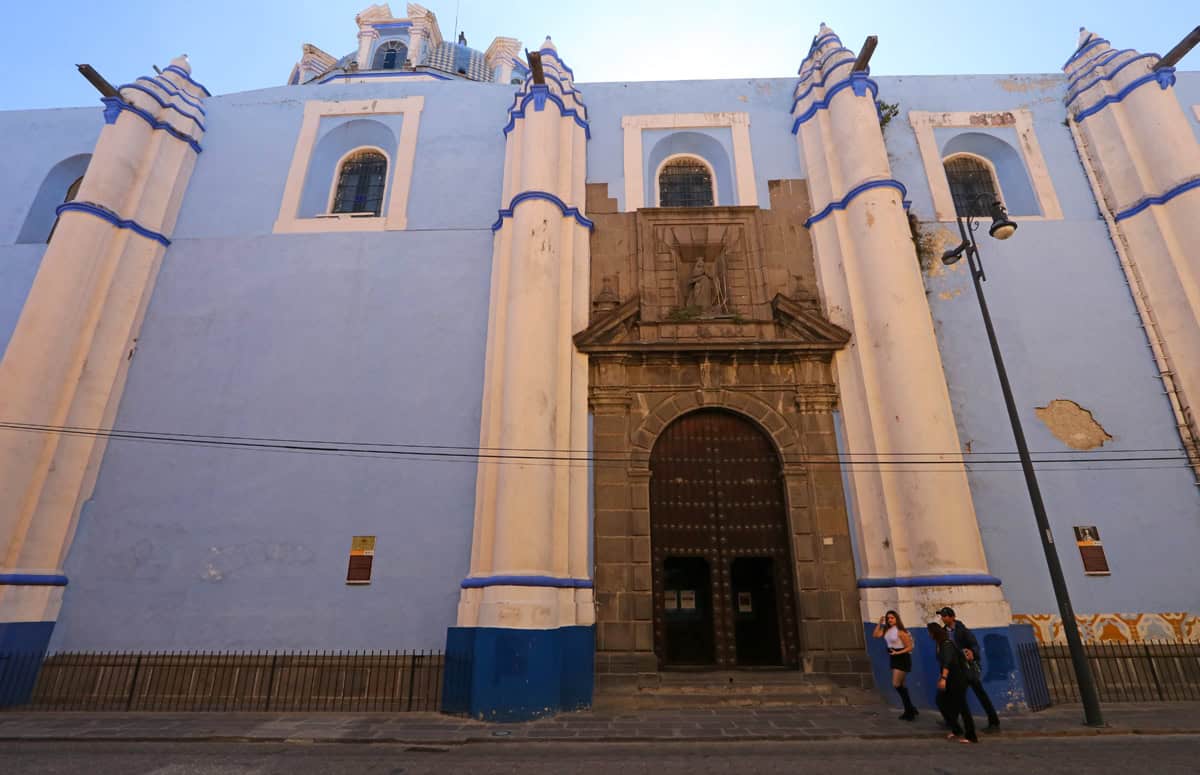
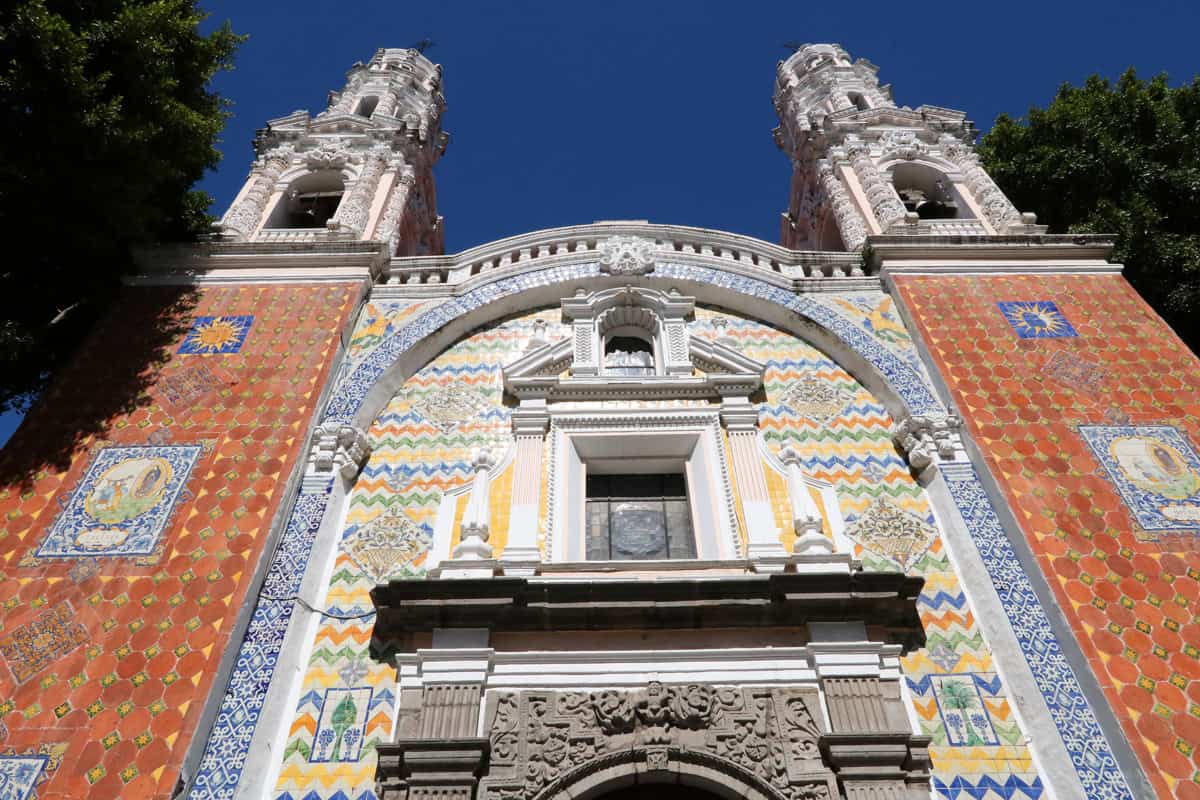
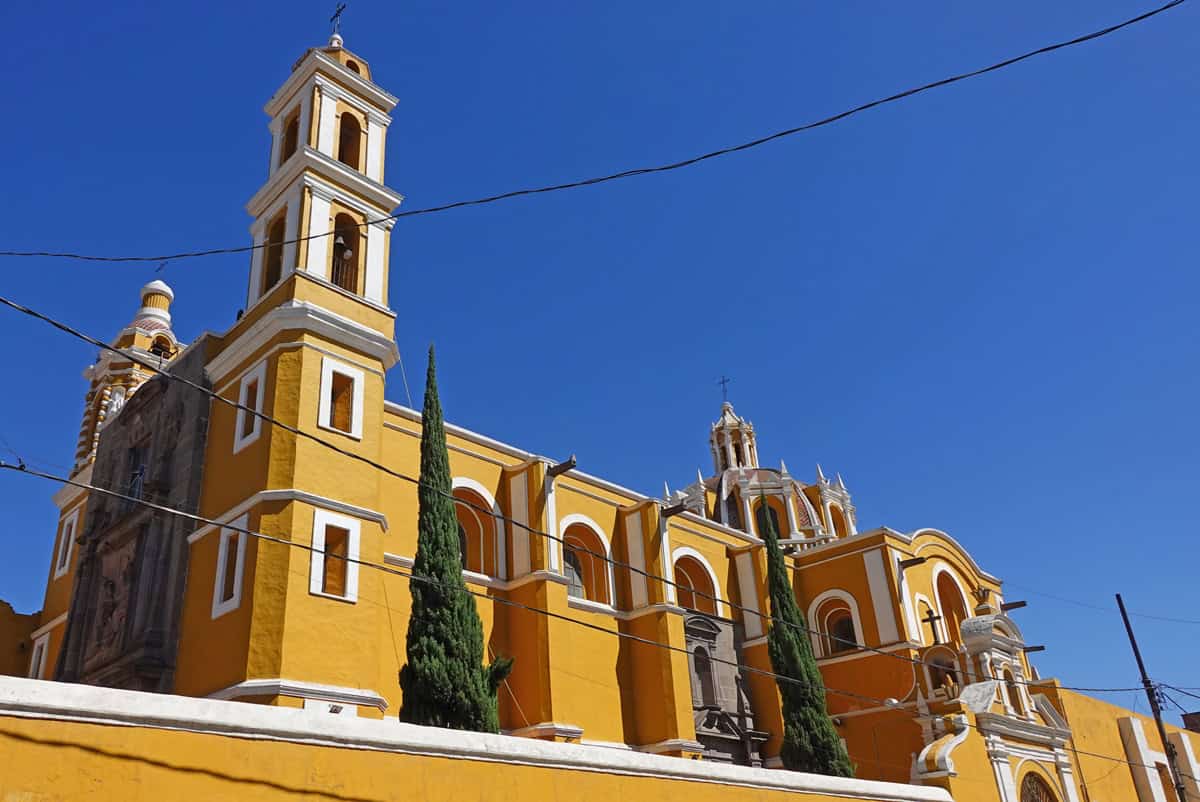
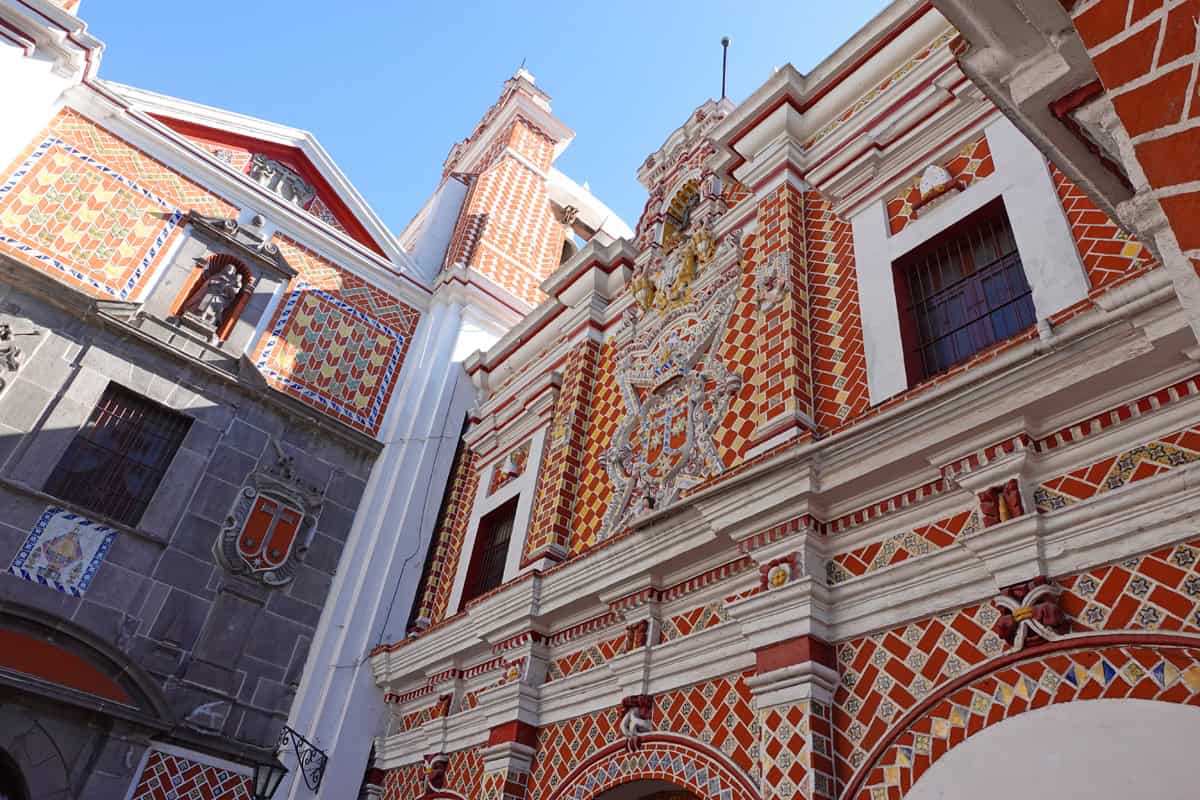
.
There are so many more…
6. Turibus Tour
For those looking to see as much of Puebla in a limited time, the Turibus is worth taking. The 90 minute city tour will pass by many of the Centro Historico sites but will, in addition, take you to some of the city’s highlights in the outskirts such as the forts of Loreto and Guadalupe (both made famous for the Cinco de Mayo victory over the French). This area on the city’s northeast flank includes a Planetarium, Regional Archaeological Museum, the Olympic Soccer Stadium, a large auditorium and some great views over the city.
.
I have a detailed post on a self-guided walking tour of Puebla coming up so that you can see all the highlights on your own. This post is a more general post showing off the beauty of Puebla.
But there are a couple of day trips (that are very close by) that you have to do when in Puebla.
Essential Day Trips from Puebla
Cholula
Half an hour from downtown Puebla, the Pueblo Magico town of Cholula is both a historical and scenic highlight in the region. Built here starting around the 3rd century BC is the Great Pyramid of Cholula (also known as Tlachihualtepetl), the largest pyramid ever built, even surpassing the Great Pyramid of Giza in Egypt. Abandoned around the 8th century AD, it became overgrown and by the time the Spanish showed up in the 1500s the Pyramid was covered by earth. Cholula became the site of a major battle in 1519 in which the Spanish defeated the Aztecs. The Spanish, as they liked to do, built a church over the ‘pagan’ site of the Pyramid. Today you can visit the site and climb up the hill to the church (Iglesia de Nuestra Señora de los Remedios). From there you have incredible views of the countryside include of Popocatépetl volcano (which was active when we were there in November of 2023).
Cholula is fascinating and worth a full day visit. This post covers Cholula in much more detail.
Atlixco
It’s the prettiest Pueblo Magico I’ve seen and you can hike up Cerro de San Miguel for great views of Popocatépetl volcano. Getting there takes 30 – 45 minutes from Puebla by either bus or taxi.
It is absolutely worth a visit to Atlixco.
Practical Information on Puebla
Getting to Puebla. 2 hours by bus (Ado Bus) from Mexico City or from the Mexico City airport.
Accommodation: A couple of good budget option are Hotel Diana and Hotel Isabel. Another recommendation, pricier but really beautiful: Palacio Julio Hotel.
Organized Tours: From Mexico City you can take this full-day tour which covers Puebla as well as Cholula.
Related: 7 Great (and easy) Day trips from Mexico City
Related: Why riding El Chepe through Copper Canyon is just mind-blowingly amazing

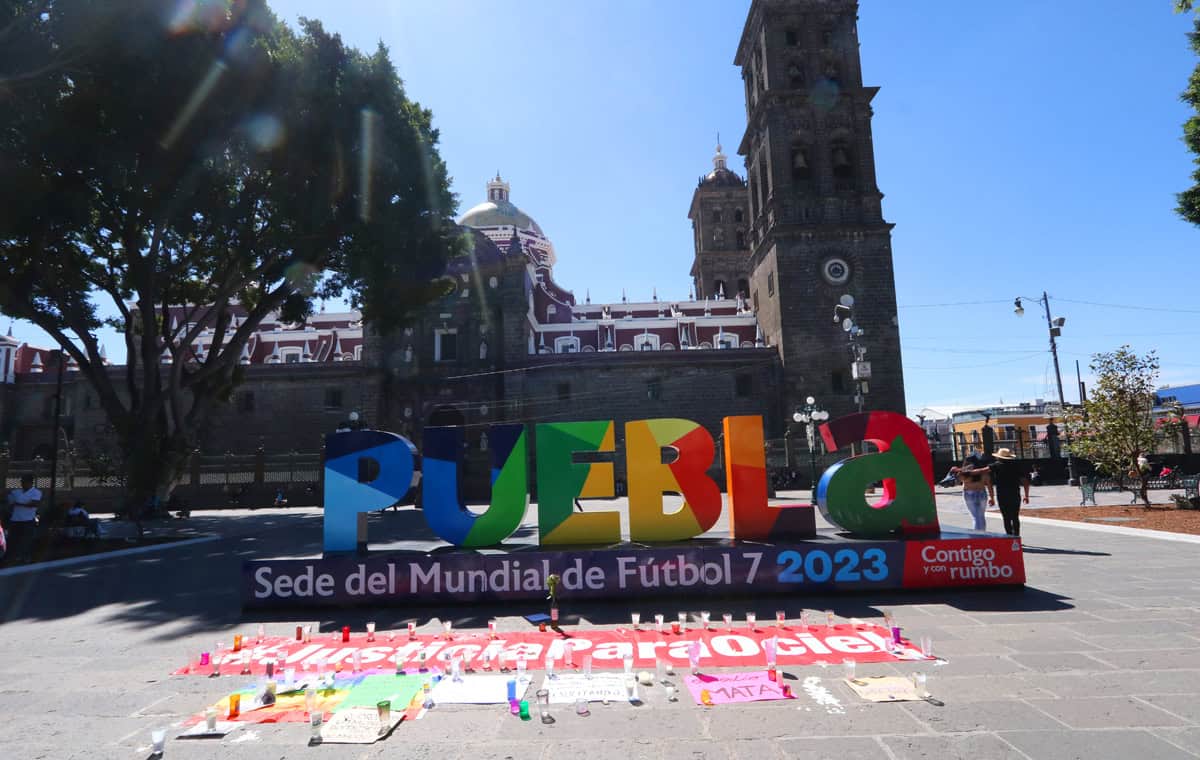

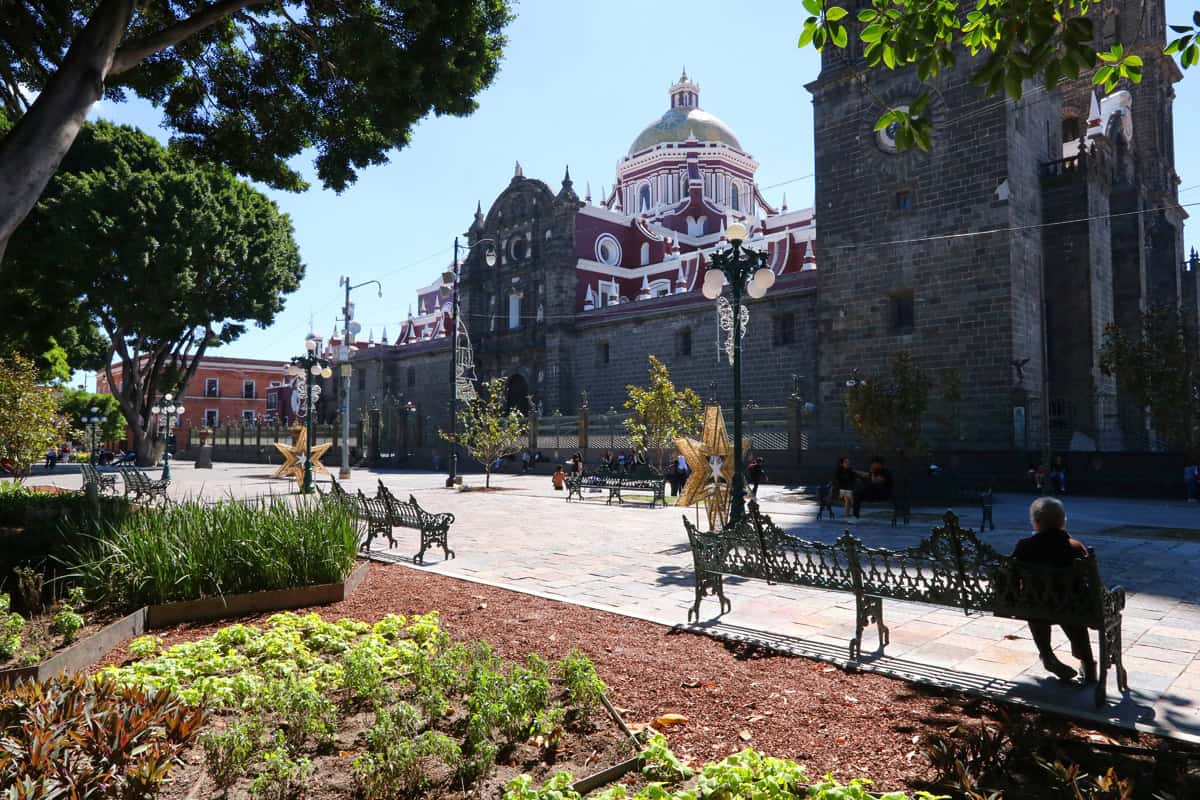
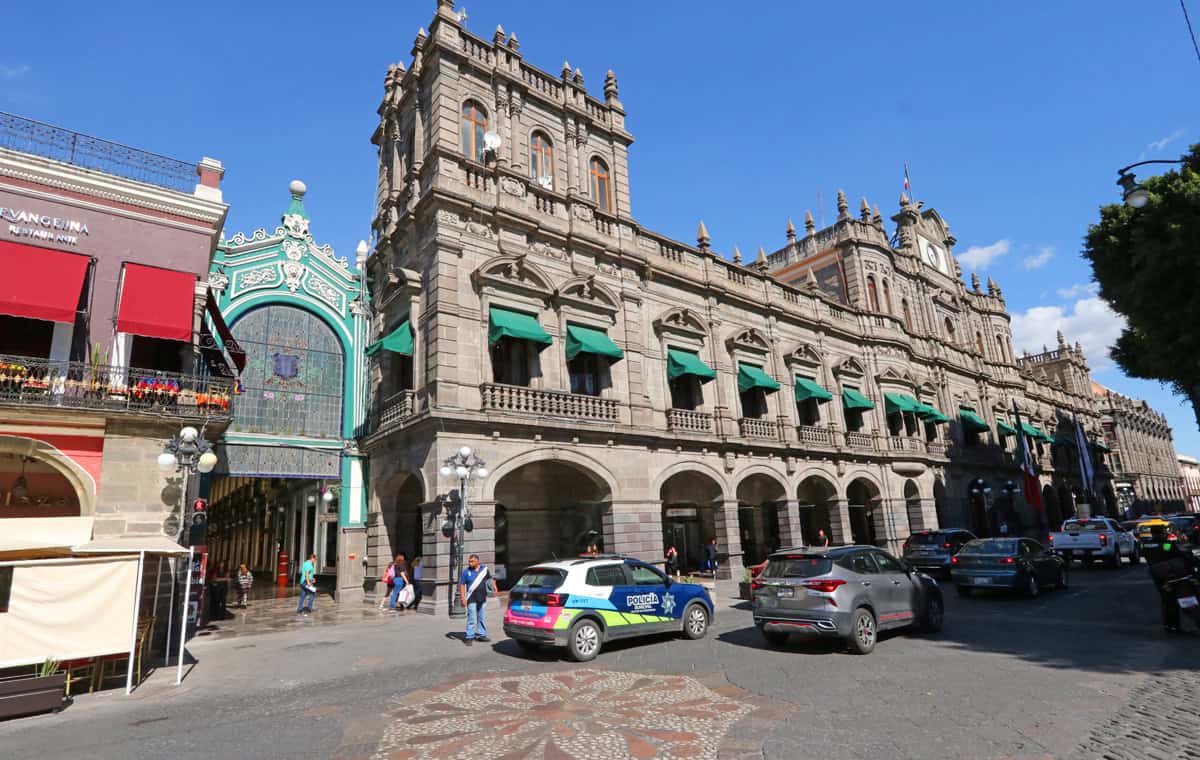
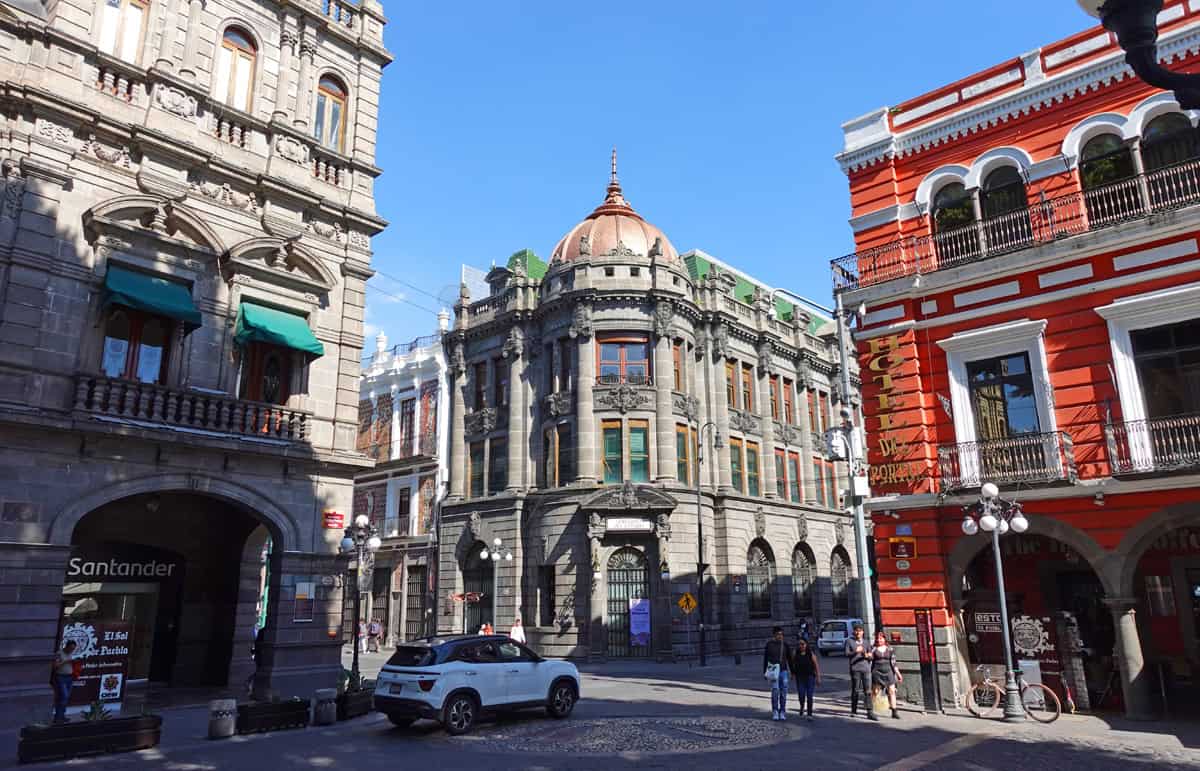

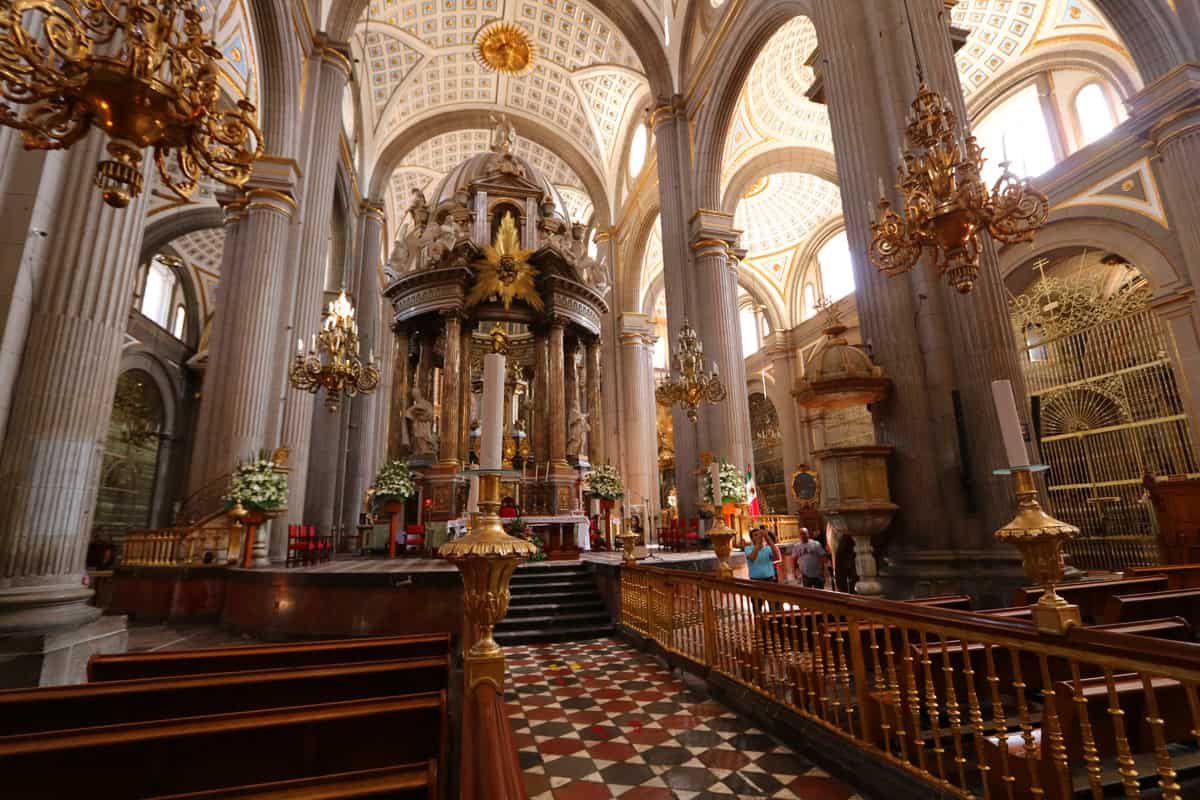
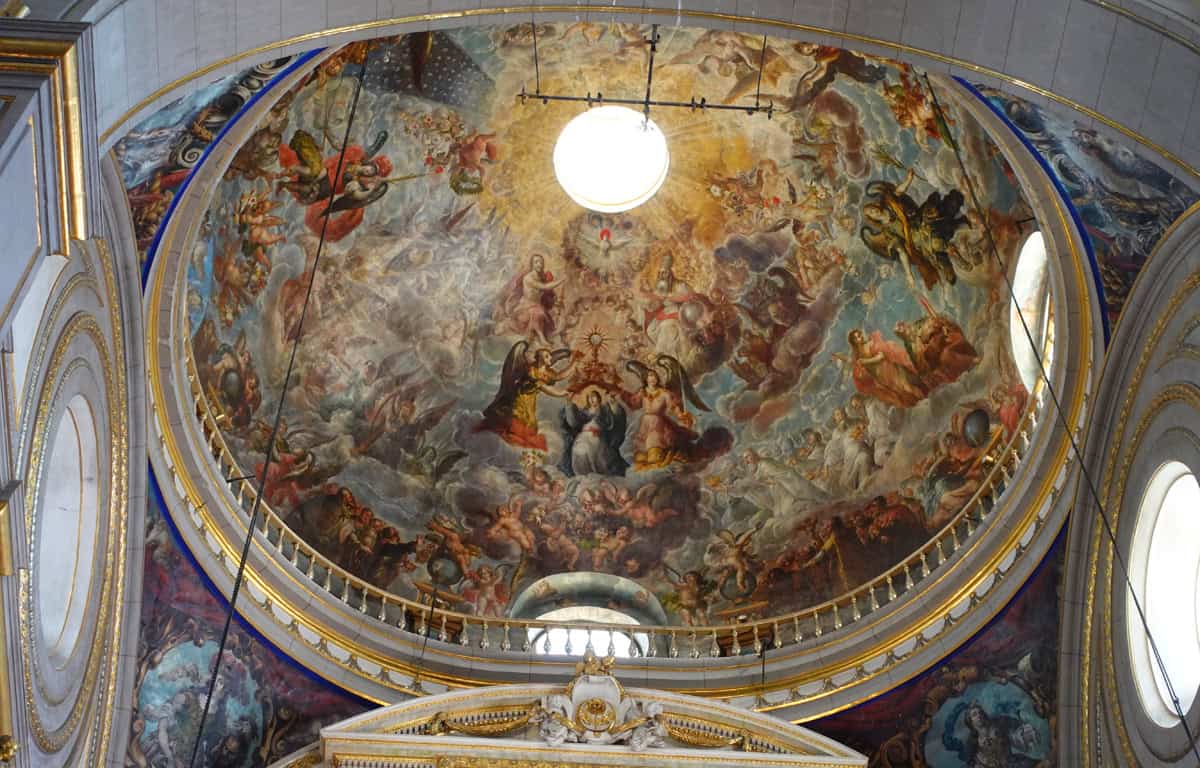

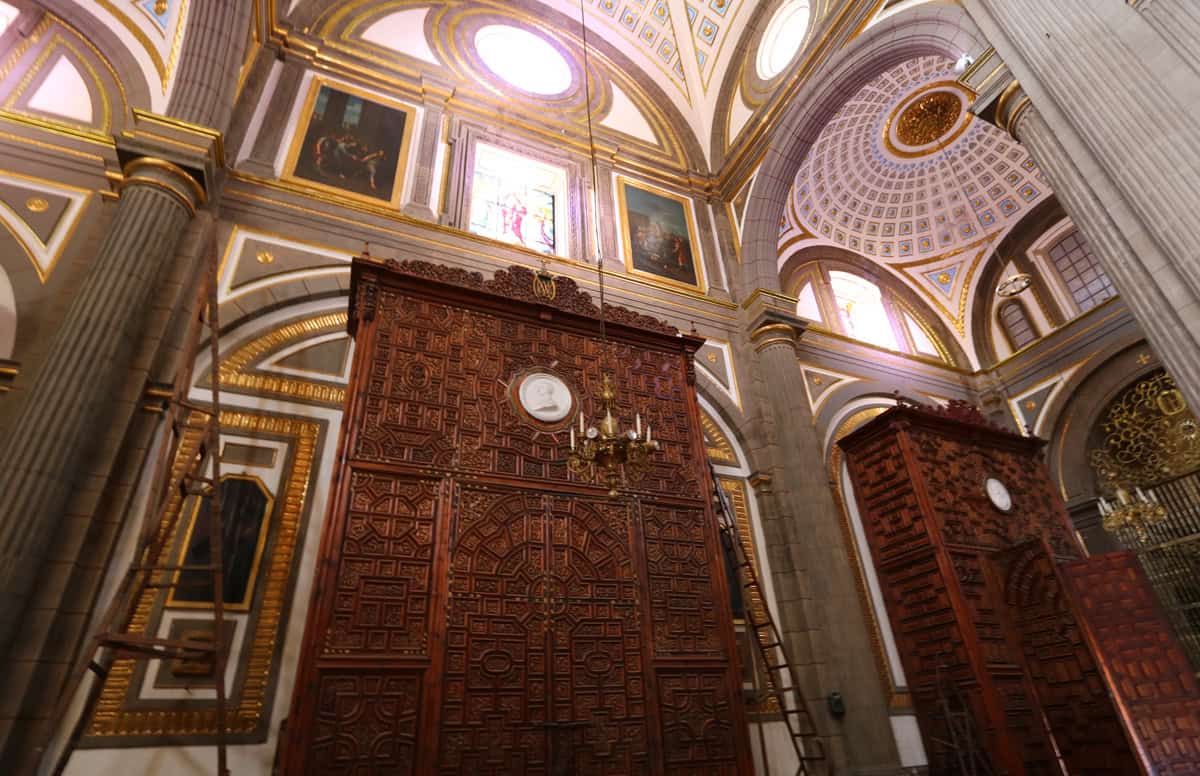
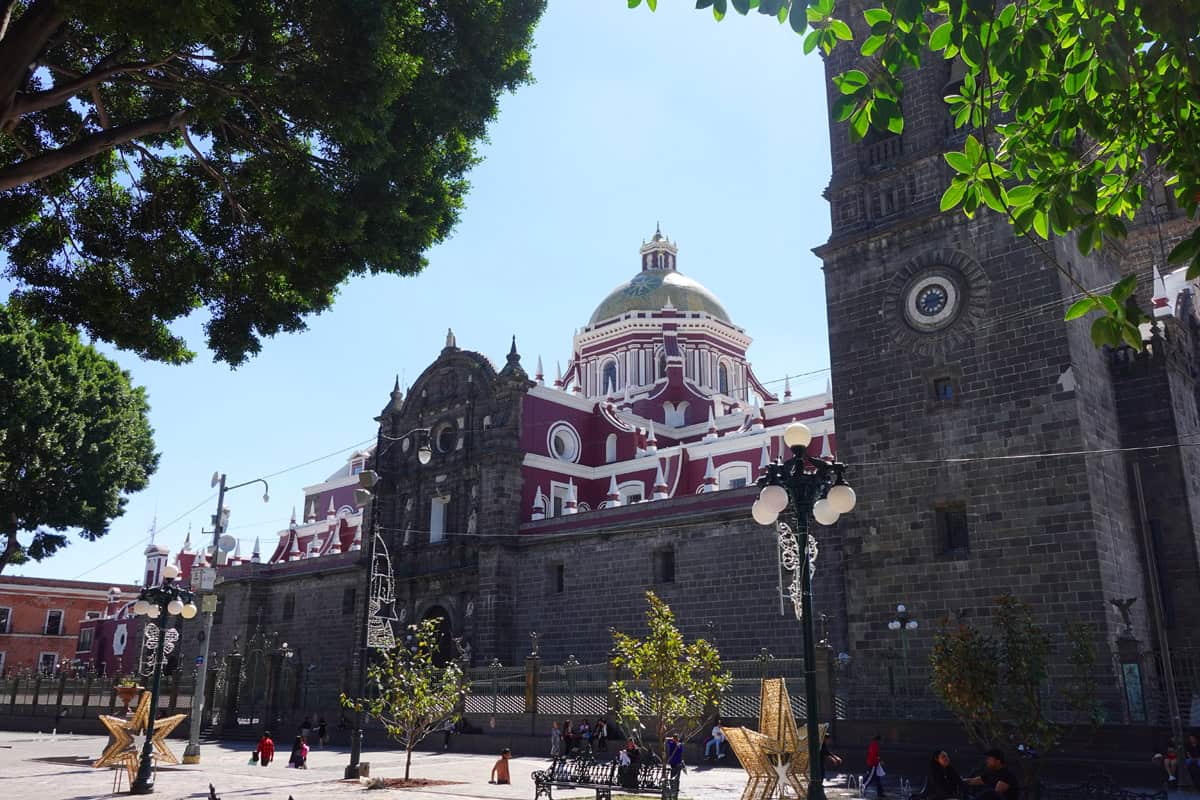

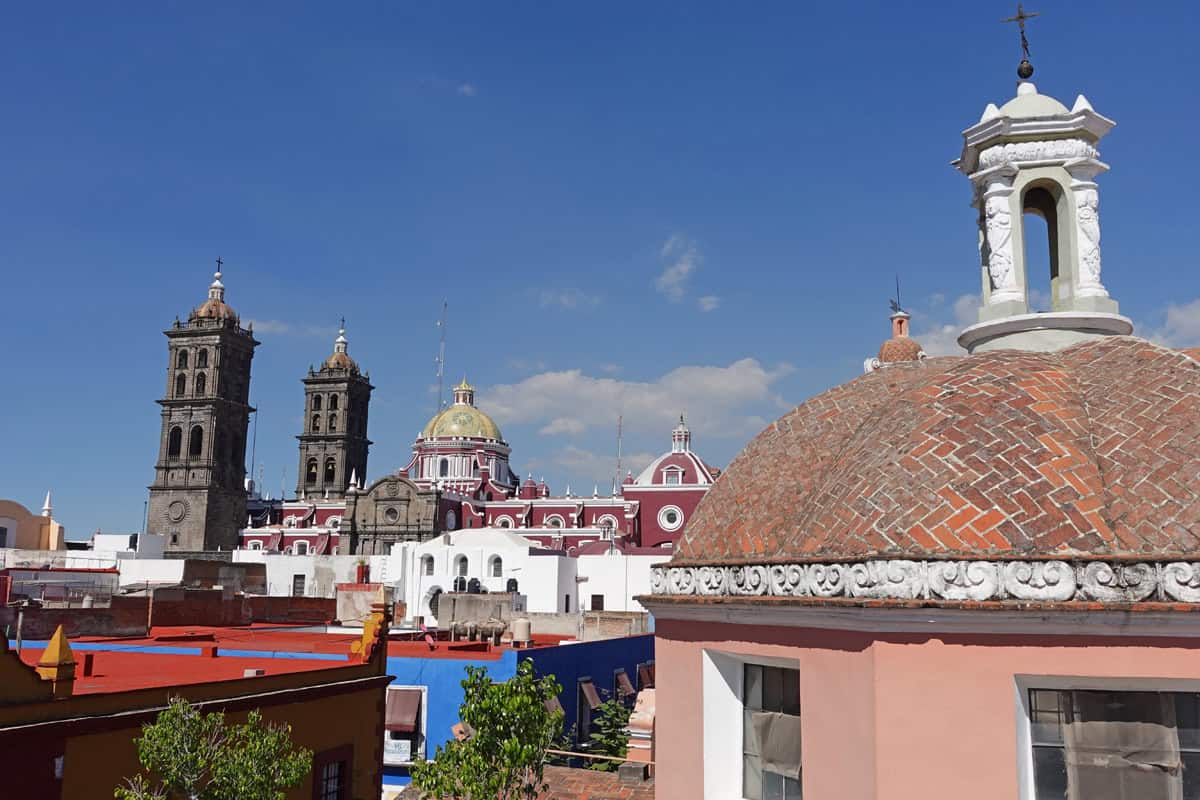
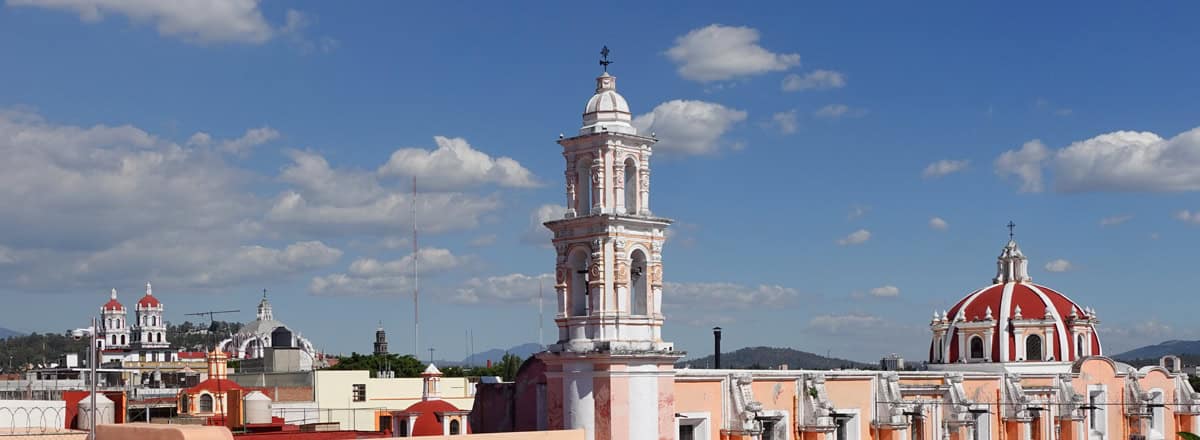

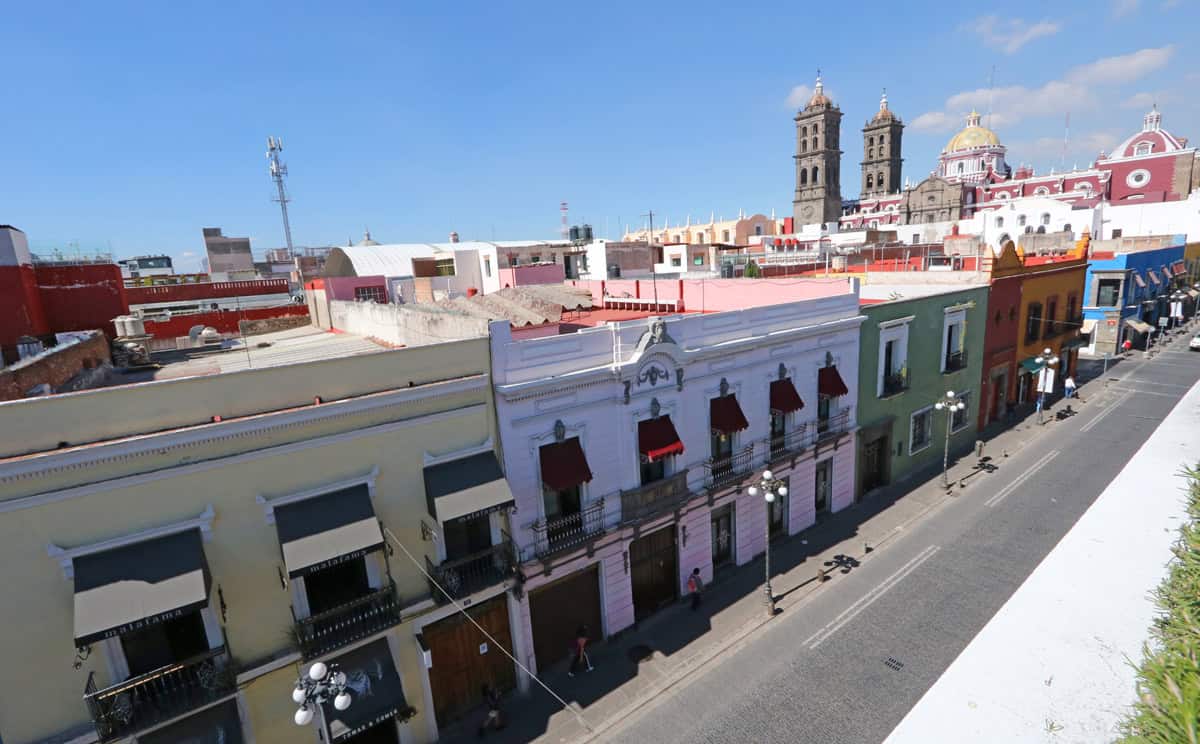
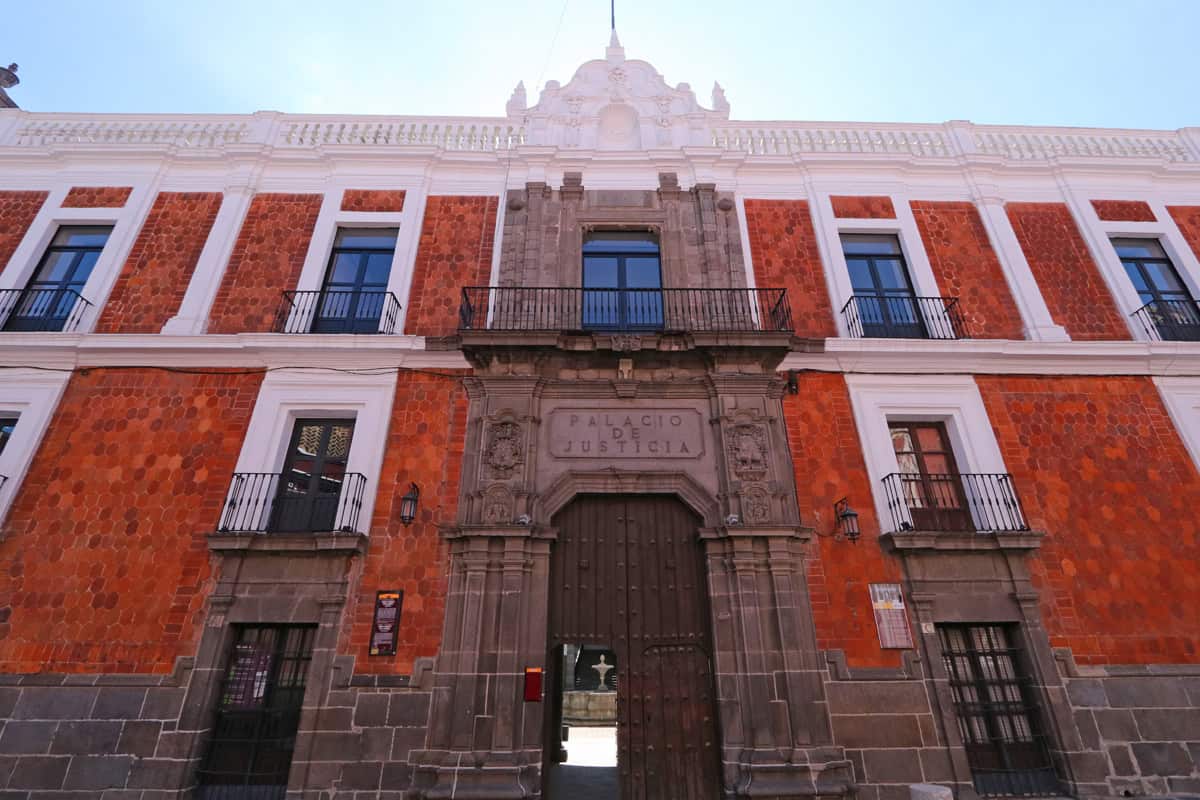
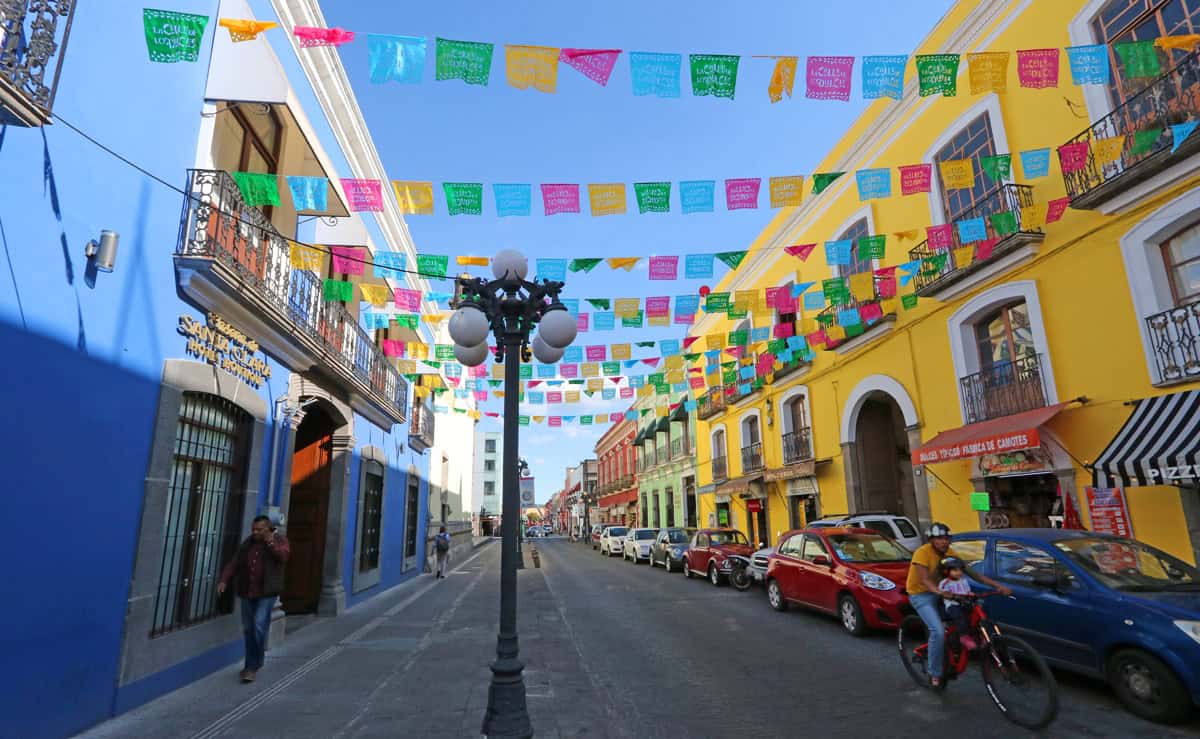
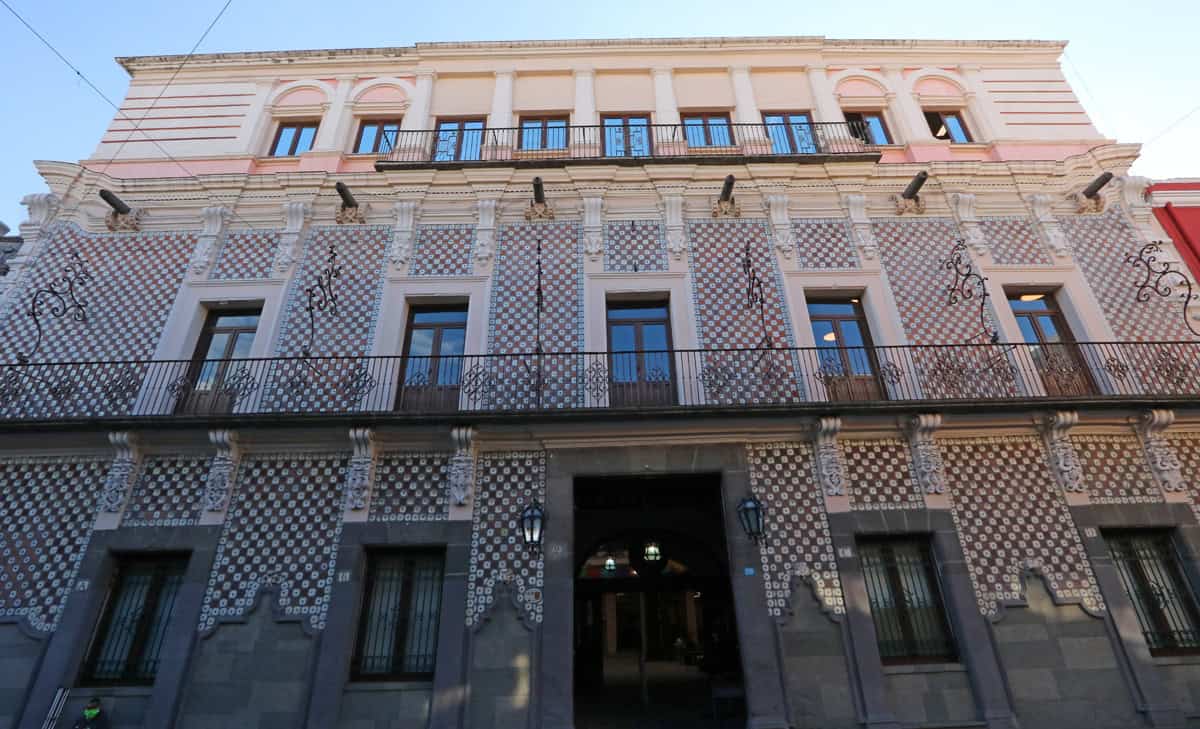




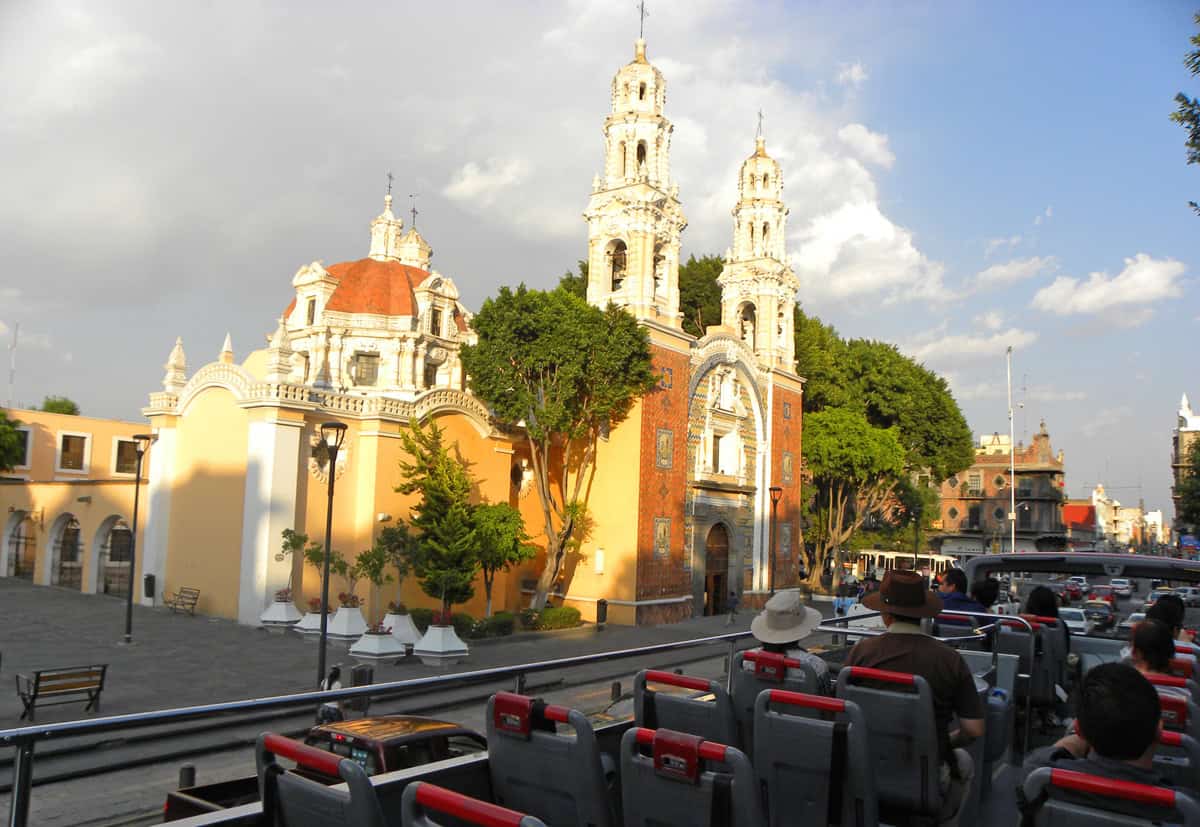


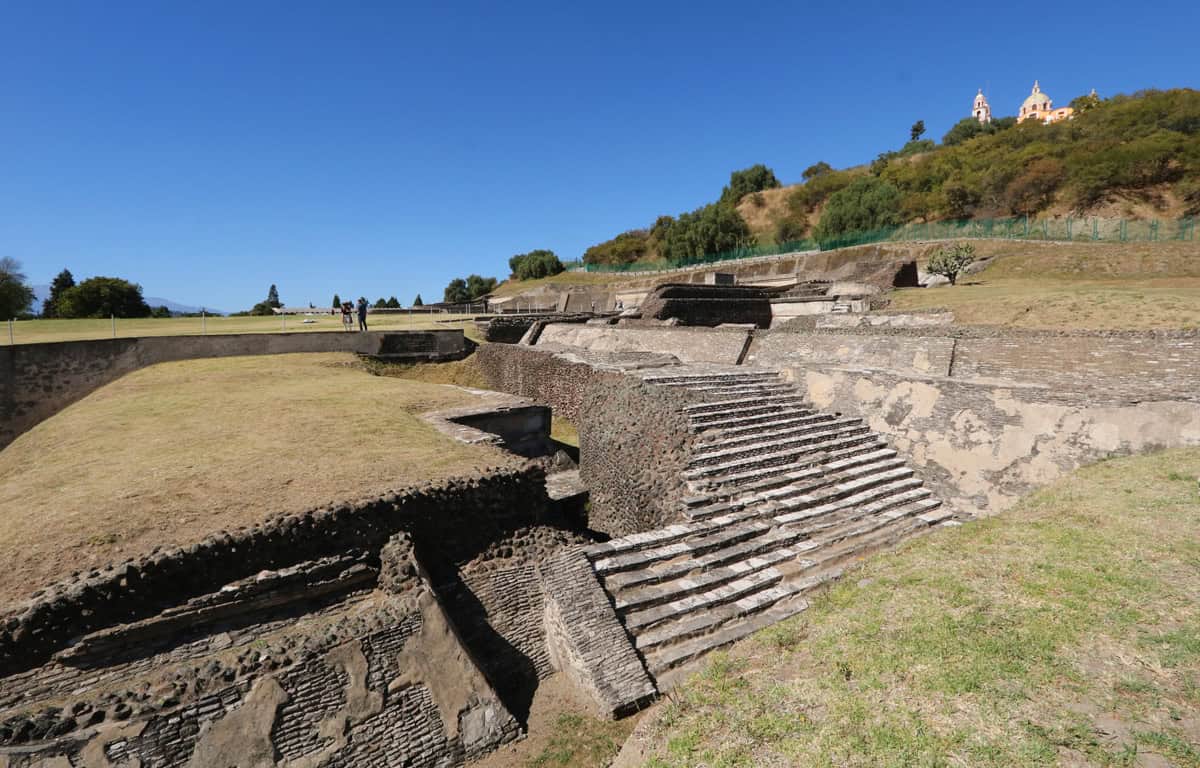
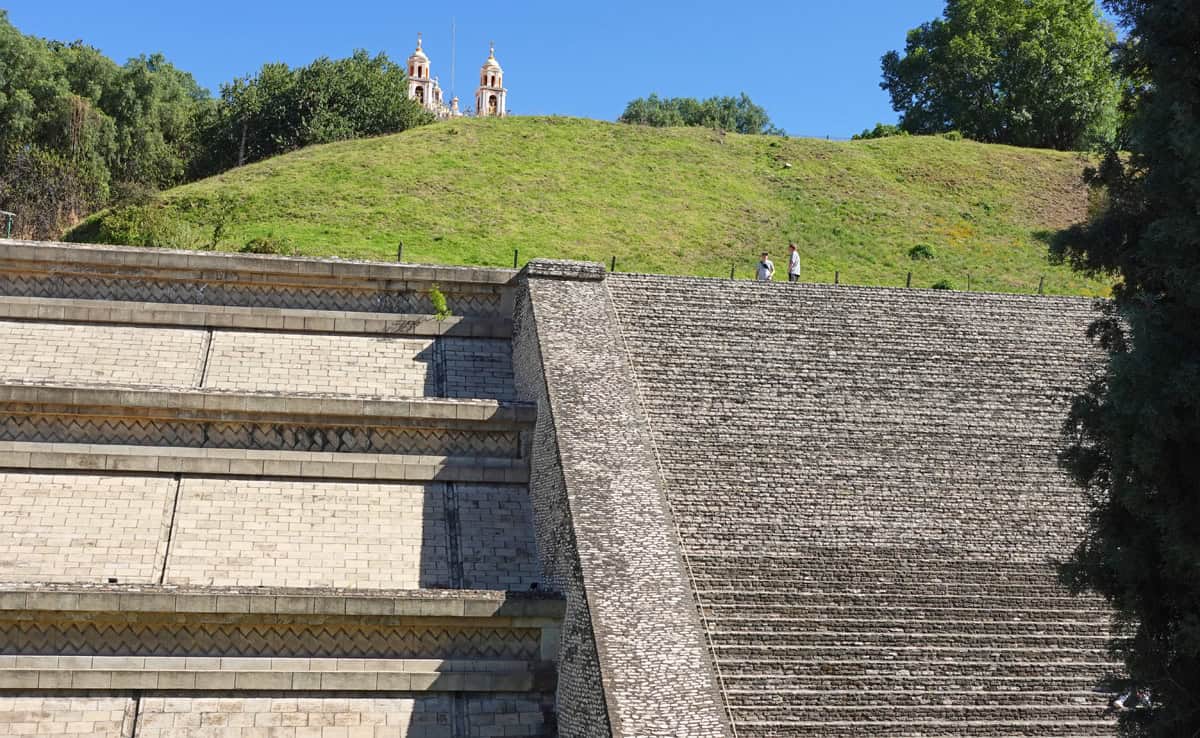
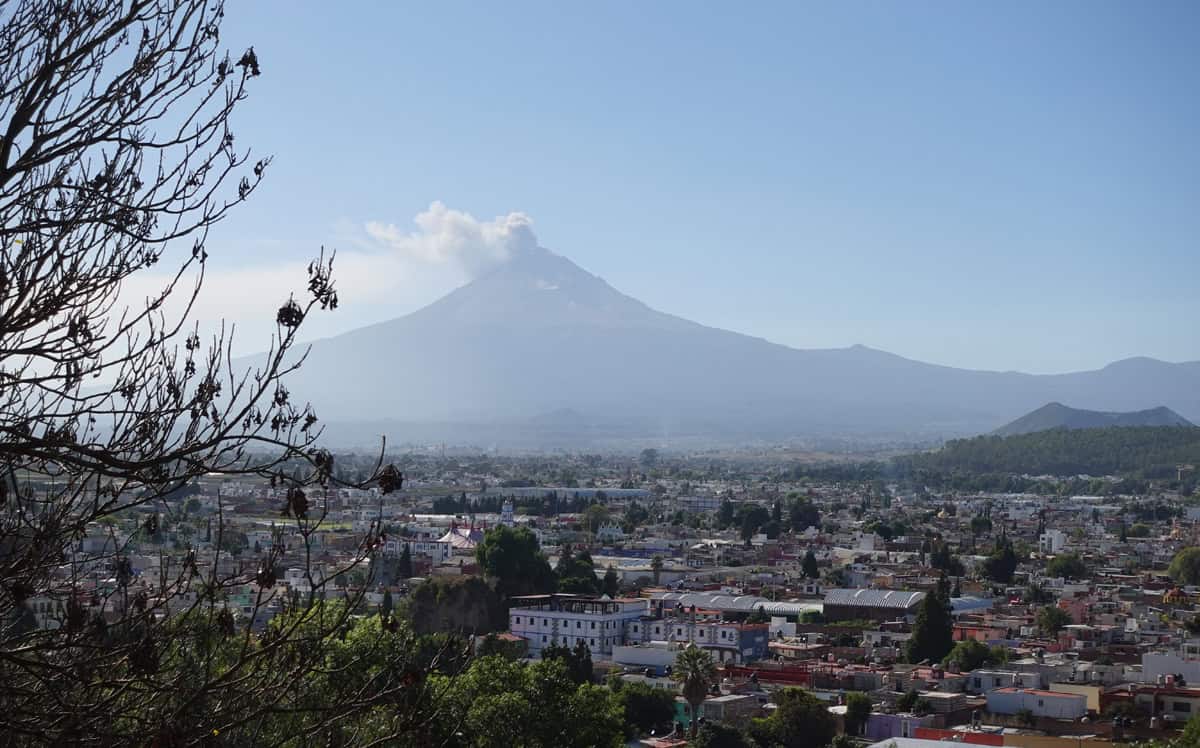

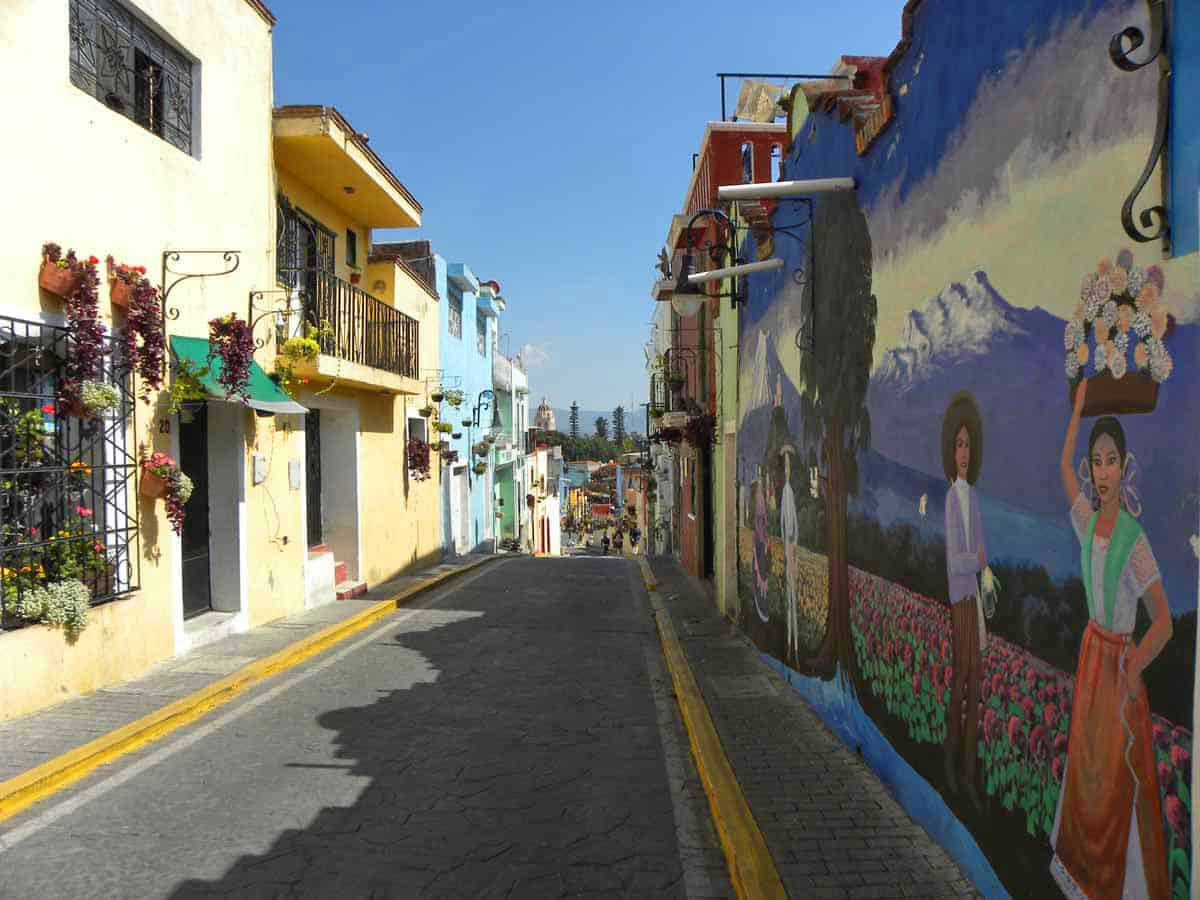
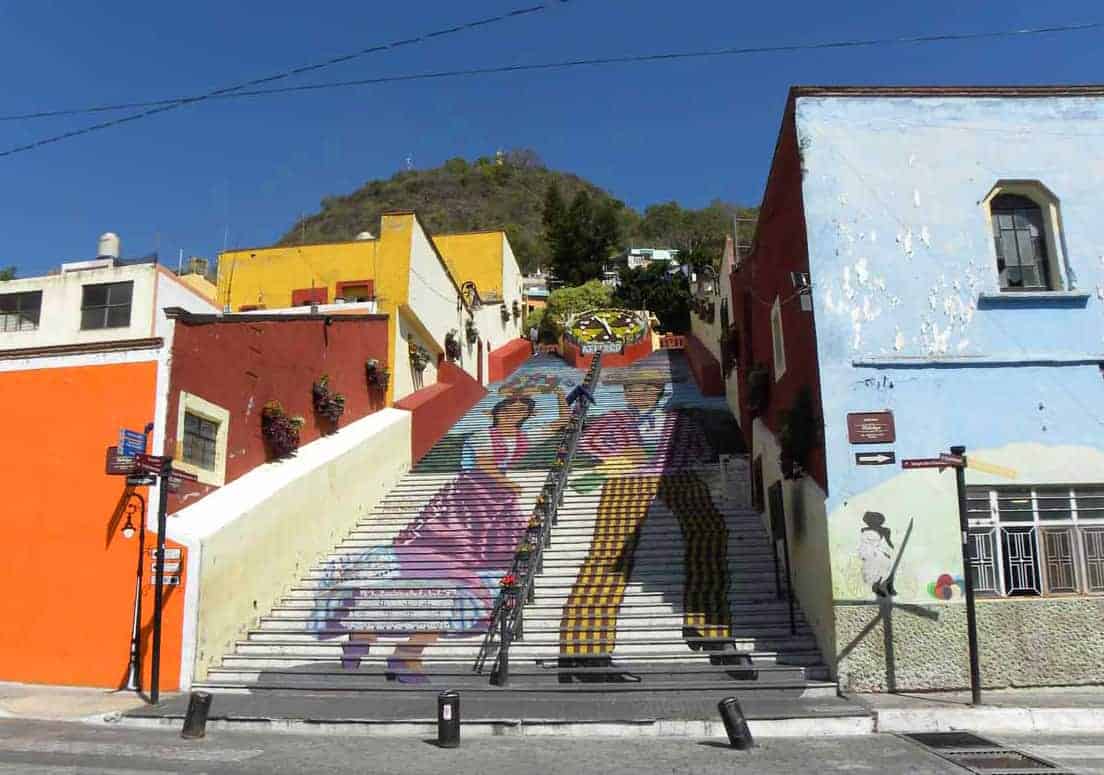
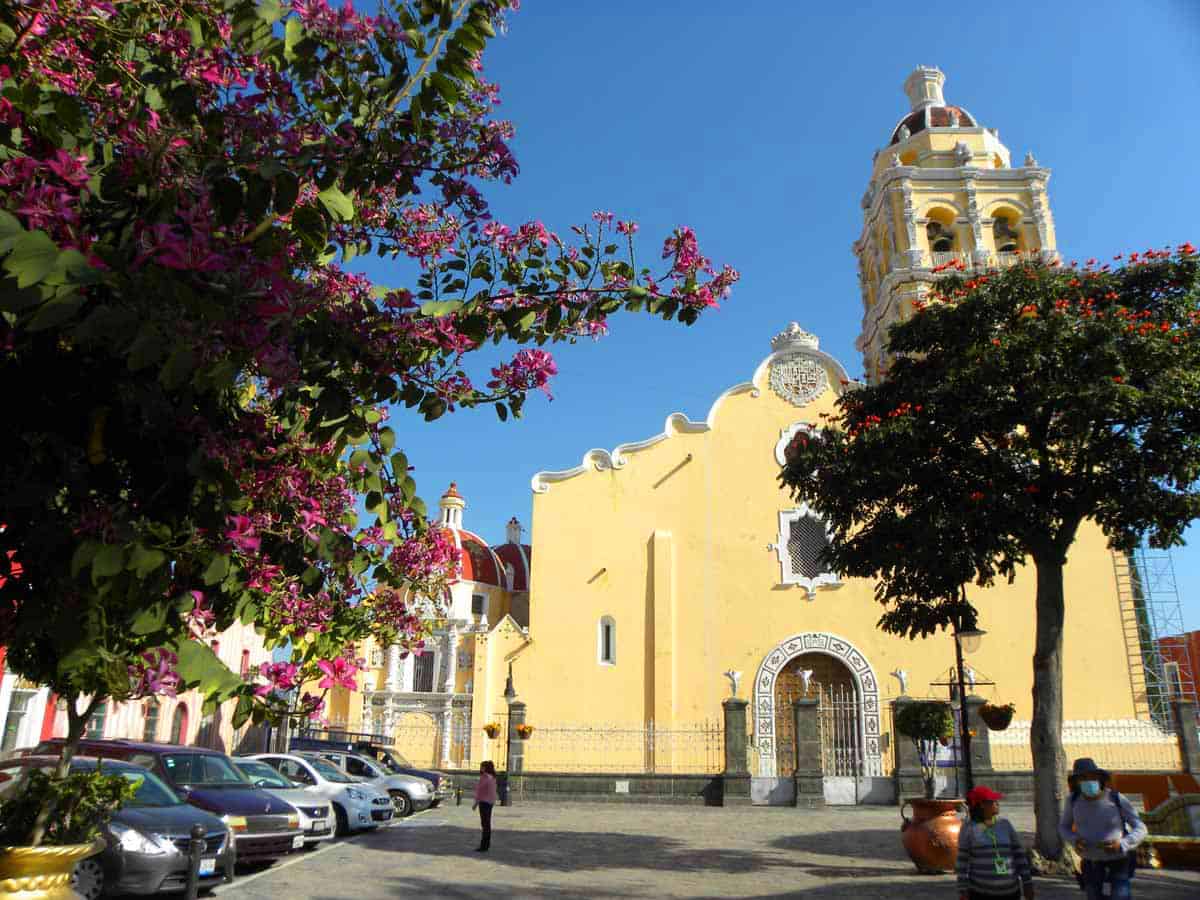

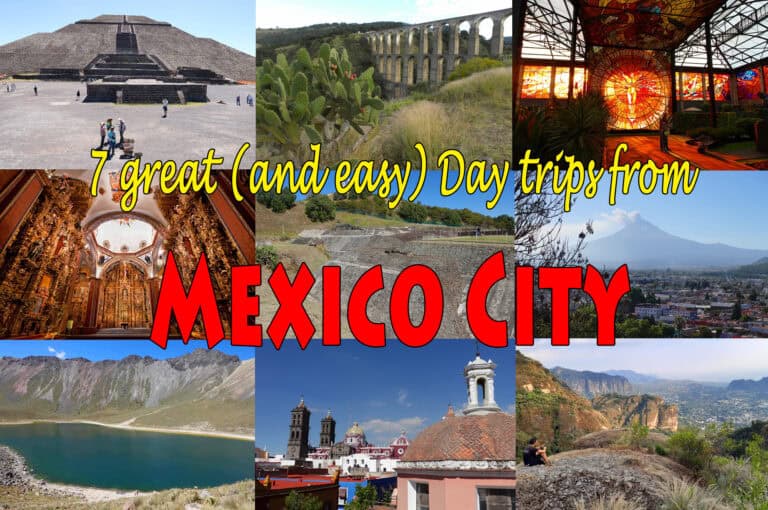
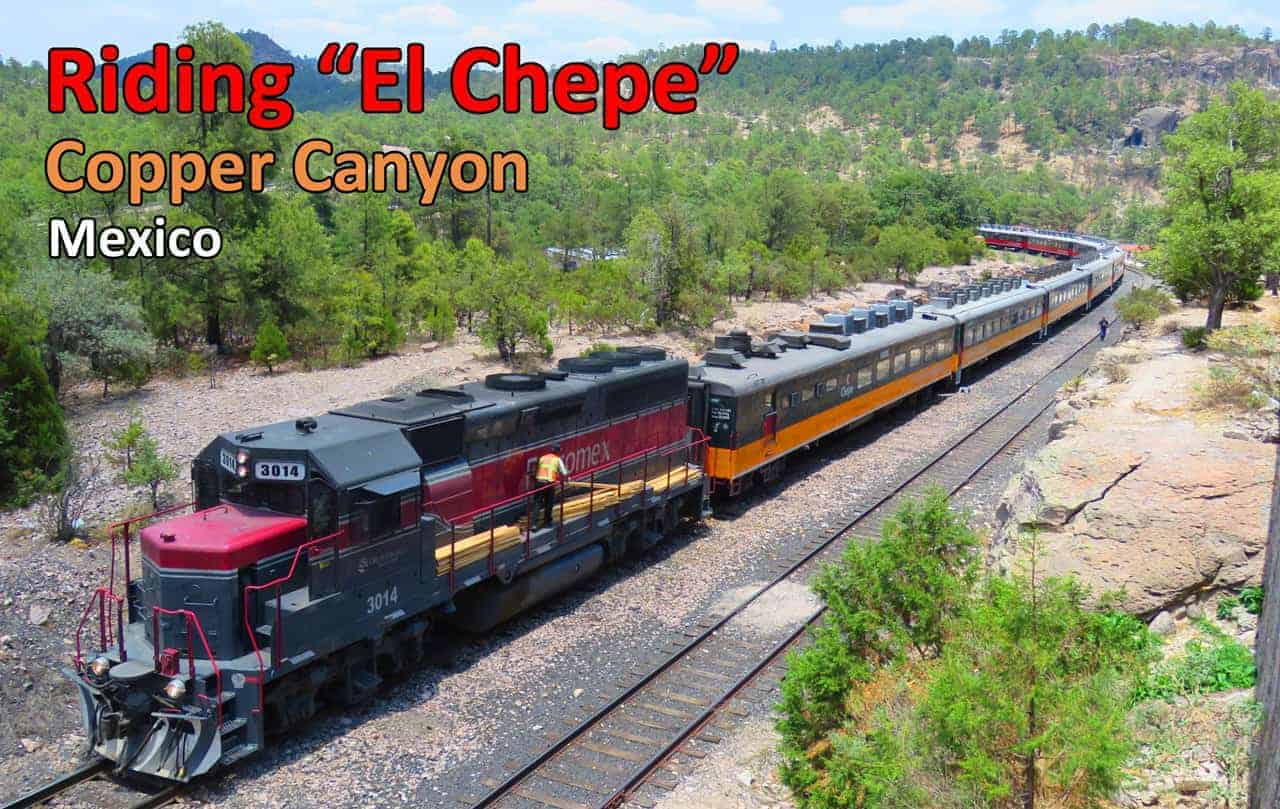
Leave a Reply